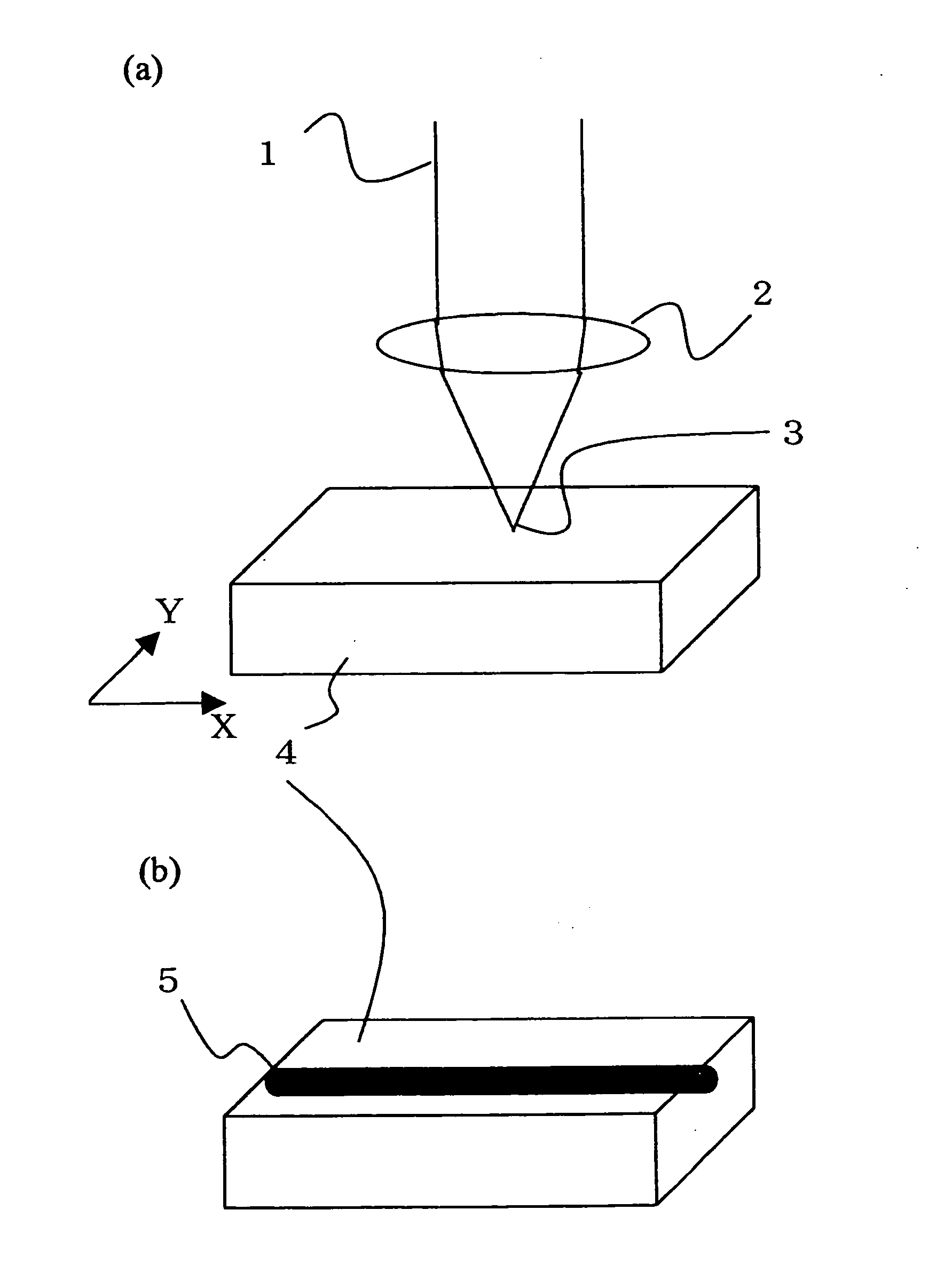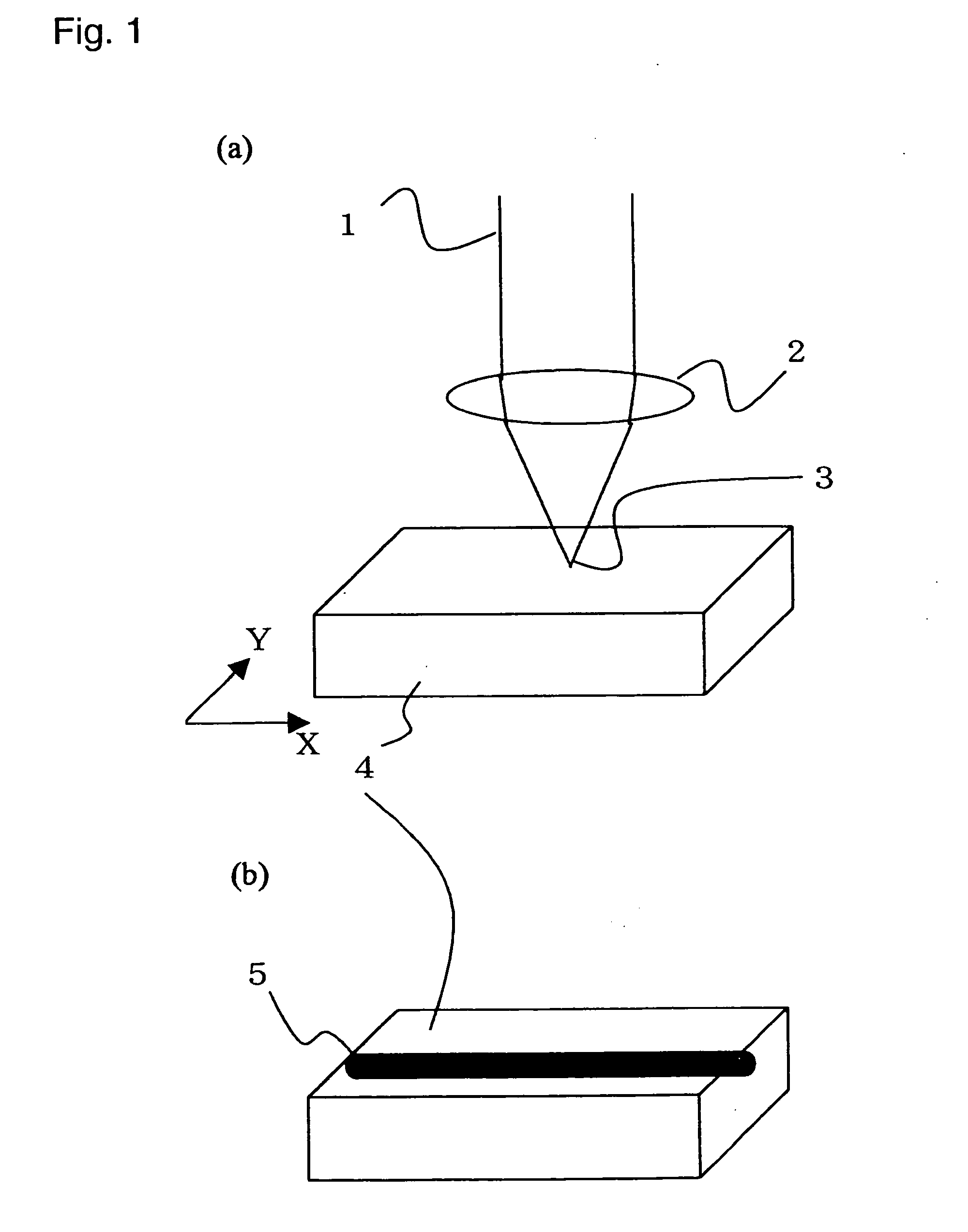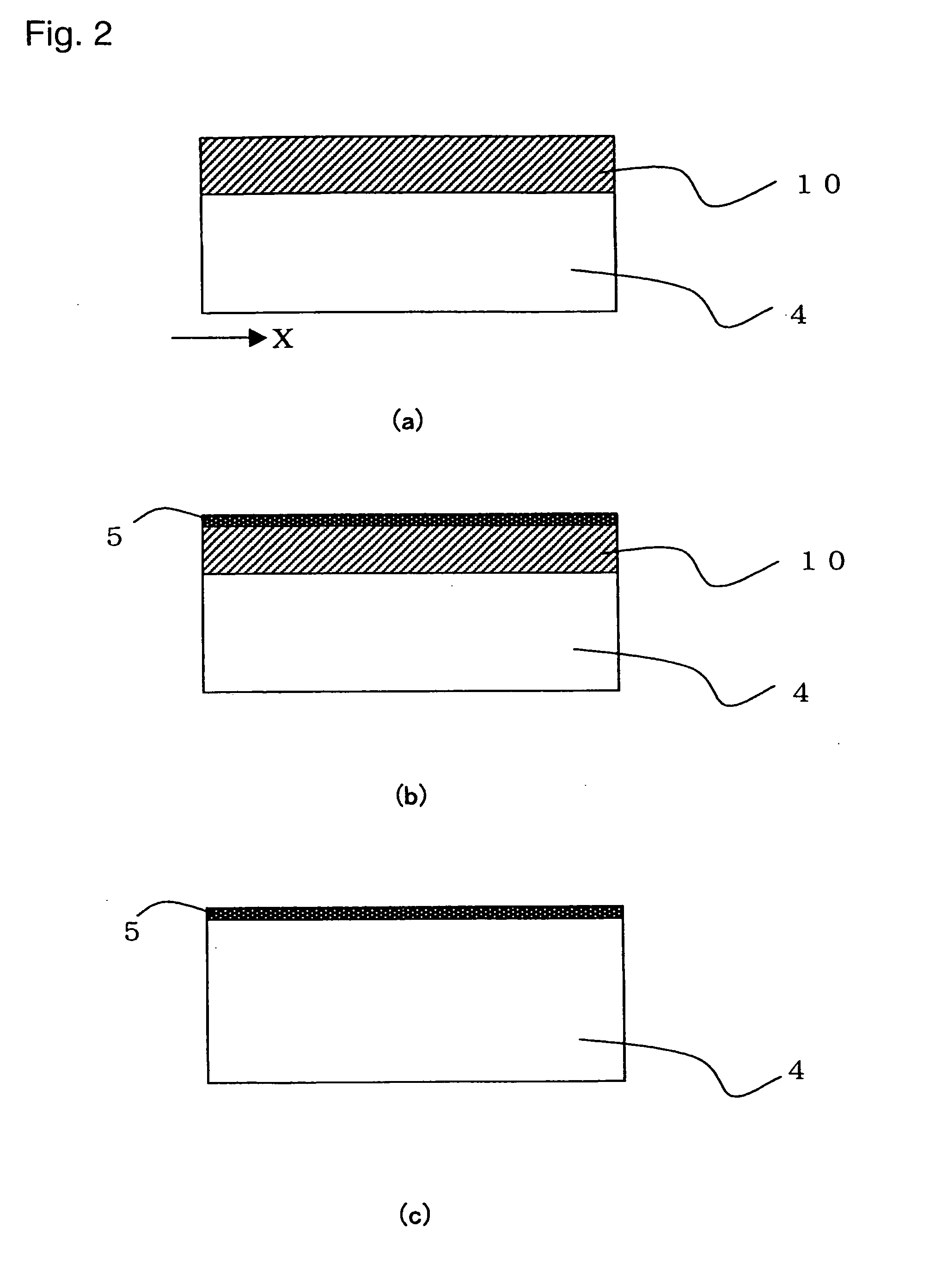Optical component and method for its production
a technology of optical components and components, applied in the direction of glass tempering apparatus, nuclear engineering, laser details, etc., can solve the problems of difficult crystal material preparation, difficult to connect to glass optical fiber, difficult to process into desired shape, etc., to achieve excellent secondary optical non-linear properties, excellent shg (second harmonic generation) or electrooptical effects, and efficient heating
- Summary
- Abstract
- Description
- Claims
- Application Information
AI Technical Summary
Benefits of technology
Problems solved by technology
Method used
Image
Examples
first embodiment
[0034]An optical component in the first embodiment employs, as a starting material, glass having at least one member selected from Ni, Fe, V and Cu incorporated to a glass matrix comprising at least one glass-forming oxide selected from SiO2, GeO2, B2O3, P2O5, TeO2, Ga2O3, V2O5, MoO3 and WO3 and at least one member selected from alkali metals, alkaline earth metals, rare earth elements and transition elements. Each glass-forming oxide has an effect to increase a glass forming ability, and alkali metals, alkaline earth metals, transition elements and rare earth elements have a function to increase the optical characteristics. Further, Ni, Fe, V and Cu will function as a medium to absorb a laser beam and convert it to heat i.e. as a heat source material and have an effect to self-organizingly form a single crystal or a group of crystal grains composed solely of components constituting the glass matrix at a temperature in the vicinity of the glass softening point at a portion irradiate...
second embodiment
[0043]An optical component in the second embodiment employs, as a starting material, glass having at least one member selected from V, Fe, Cr, Mn and Cu is incorporated as a heat source material to the same glass matrix as in the first embodiment.
[0044]And, in accordance with the following first process or second process, a pattern made of a single crystal or a group of crystal grains will be formed at the surface or the inside of the above glass.
First Process
[0045]FIG. 2 is a schematic view illustrating the first process. Firstly, the glass is subjected to reduction treatment or oxidation treatment. By the reduction treatment or oxidation treatment, the ionic valency of the heat source element in the glass will be changed, whereby as shown in FIG. 2(a), a light-absorbing layer 10 having an absorption coefficient at an emission wavelength of a laser beam to be applied increased over a prescribed depth from the surface of the glass 4, will be formed. Here, the oxidation treatment may...
example 1
[0062]Glass comprising 1 mol % of NiO, 33.3 mol % of BaO, 16.7 mol % of TiO2 and 50 mol % of SiO2, was prepared by a melting method and formed into 10 mm×10 mm×1 mm, and further optical polishing was applied to the surface of 10 mm×10 mm as a surface to be irradiated with a laser. Here, the glass transition temperature of the glass was 743° C.
[0063]Then, using a laser irradiation apparatus shown in FIG. 1(a), light 1 of an Nd:YAG laser (wavelength: 1.06 μm) being CW laser was applied, with its focal point 3 adjusted to the polished surface of the glass 4 by means of the lens 2, so that the position of the focal point 3 of the laser beam was spatially moved continuously at a rate of 7 μm / sec in the X-direction with an irradiation power of 80 W / cm2, thereby to prepare a group 5 of crystal grains linearly grown as shown in FIG. 1(b). FIG. 5 shows a transmission polarization microscopic photograph of the laser-irradiated portion of the glass wherein Ba2TiSi2O8 crystal grains having grai...
PUM
| Property | Measurement | Unit |
|---|---|---|
| Diameter | aaaaa | aaaaa |
| Diameter | aaaaa | aaaaa |
| Speed | aaaaa | aaaaa |
Abstract
Description
Claims
Application Information
 Login to View More
Login to View More - R&D
- Intellectual Property
- Life Sciences
- Materials
- Tech Scout
- Unparalleled Data Quality
- Higher Quality Content
- 60% Fewer Hallucinations
Browse by: Latest US Patents, China's latest patents, Technical Efficacy Thesaurus, Application Domain, Technology Topic, Popular Technical Reports.
© 2025 PatSnap. All rights reserved.Legal|Privacy policy|Modern Slavery Act Transparency Statement|Sitemap|About US| Contact US: help@patsnap.com



